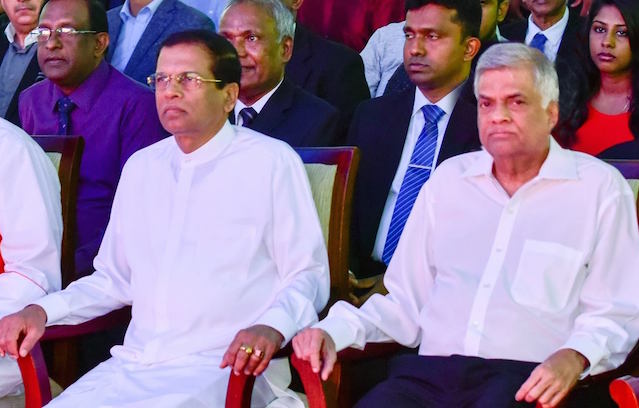The Wealthy Ignoring The Poor Are Not Worthy Of Their Wealth
“The aim of the High is to remain where they are. The aim of the Middle is to change places with the High. The aim of the Low, when they have an aim…is to abolish all distinctions and create a society in which all men shall be equal.” ~ George Orwell, 1984

Arguments for social justice can never be foreclosed. From great economists to social scientists, our history shows, have argued the case for social justice from time immemorial. And great minds of ancient India, China, Greece and the Middle East up to the twenty first century, whether as part and parcel of their religious teachings or as a fundamental basis of the socio-economic dialogue, have accepted this notion of social justice as ‘justice in terms of the distribution of wealth, opportunities, and privileges within a society’. When justice as per its definition, ‘the quality of being fair and reasonable’, is juxtaposed in the broader definition of social justice, one unvaryingly finds other related notions such as equality, equal distribution, egalitarianism and so forth and so on.
One simply cannot ignore that social justice, is essentially intertwined with providing a social net for those who are at the bottom of the economic ladder in society. Unregulated capitalism or crony-capitalism as is practiced in developing countries such as Sri Lanka, Malaysia, Indonesia and India and Bangladesh will unquestionably lead to creating a wide gulf between the rich and the poor. That gulf is the fertile ground for trade union-protests, social indignation, student unrest and communal riots instigated by fringe groups robed in saffron. The poorest of the poor, when see no light at the end of the proverbial tunnel, are easy to be catapulted from social slumber to violent uprising. This social dynamic is the one single vibrancy that is threatening the stability in Sri Lanka and its unhindered economic development.
This widening gulf between the rich and the poor is a symptom that signifies a severe socio-economic malaise. Yet no long-lasting solution has been discovered nor has any serious attempt being made by politicians to secure a more acceptable socio-economic system. Man has to be content with the ever-ongoing attempts at solutions. That, in a context of a contemporary event, is extremely hard. Historians will analyze, dissect and discover a significant and compelling reason or reasons for an event to occur, yet in a contemporary setting that exercise is almost next to impossible.
Apart from the religious leaders such as Siddhartha Gautama, Jesus Christ, Mohamed, Moses and the unknown authors of the Upanishads, it was Chanakya, the chief advisor to Emperor Chandragupta of ancient India and the first social scientist in history, who gave articulated the notion of political-economic realities and their interaction with society. He wrote ‘Arthashastra’ (political economics), explaining the predominant features of the State and its fundamental functions, the duties of the King and sub-Kings etc. Chanakya perhaps is the only personality who has been accepted and revered as a genius both by Indian and Western scholars. Nevertheless, neither Chanakya nor his successors from Machiavellian to Karl Marx, Engels and modern economists and social scientists have failed to offer a solution to humanity’s nagging problem of the widening gap between the richest and poorest classes of any society.
Against this historic backdrop, Sri Lanka’s present stagnant economy, its divergent political immobility and its fast-spreading social sickness with corruption and dishonesty at the forefront, the exercise of narrowing of this gap between the richest and the poorest looks a pipedream. After obtaining Independence, with each successive government, the country’s economy seemed to have gone backwards except in the period of 1977 to 1994. The economic boom that took place during that period is due to many reasons. Among them are:
- Winning five sixths majority for the UNP in parliament and thereby ensuring overwhelming affirmation by the legislature for Prime Minister/President J R Jayewardene.
- Unshackling of the economy that was held hostage to the vagaries of State-controls and creating a free-market economy
- Presence of some heavy-hitting Cabinet Ministers in the caliber of R Premadasa, Gamini Dissanayake, Lalith Athulathmudali, Ronnie de Mel, Nissanka Wijeyratne and A C S Hammed
- Cohesiveness of the government ranks with minimum of cracks within
- Last but not least, strong and sturdy leadership at the helm – J R J
It is not fair by both parties to compare, one against the other. But the inescapable fact is Sri Lanka does not seem to have those giants of men and women anymore. Not at the official level, nor at the politico level. It is indeed a great tragedy. Despite a war going on in the North and East, the country’s trek towards economic development did not suffer a bit. The free market economy’s beneficial effects started manifesting themselves all over the country. Emergence of a vibrant middle class was visible. Advent of color television, introduction of the three wheeler culture- of course to the great detriment of smoother operation of traffic in the current context- availability of goods and services which existed only in the wildest dreams of Lankans prior to ’77, they all changed dramatically the way of life of every Sri Lankan. With all these good-effects also came the plague of prostitution, karaoke bars, and massage parlors-inevitable harbingers of decadence.
